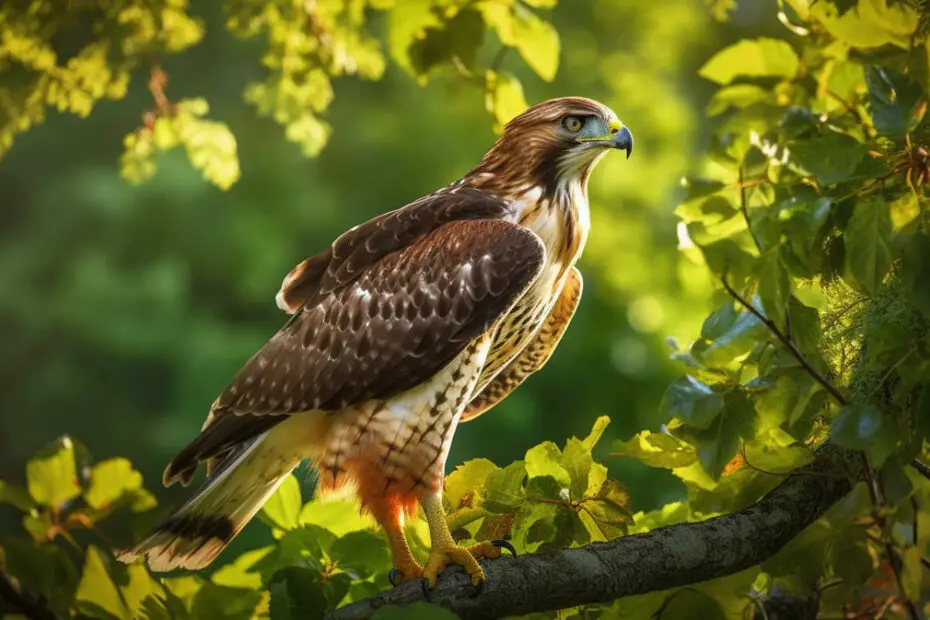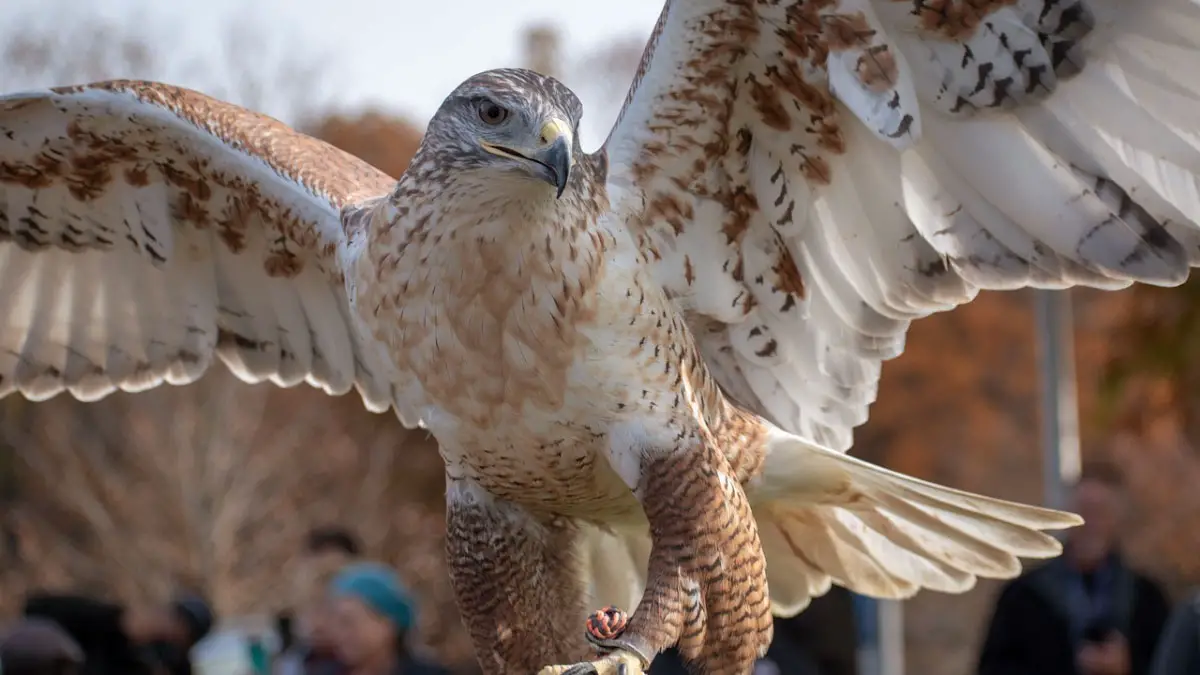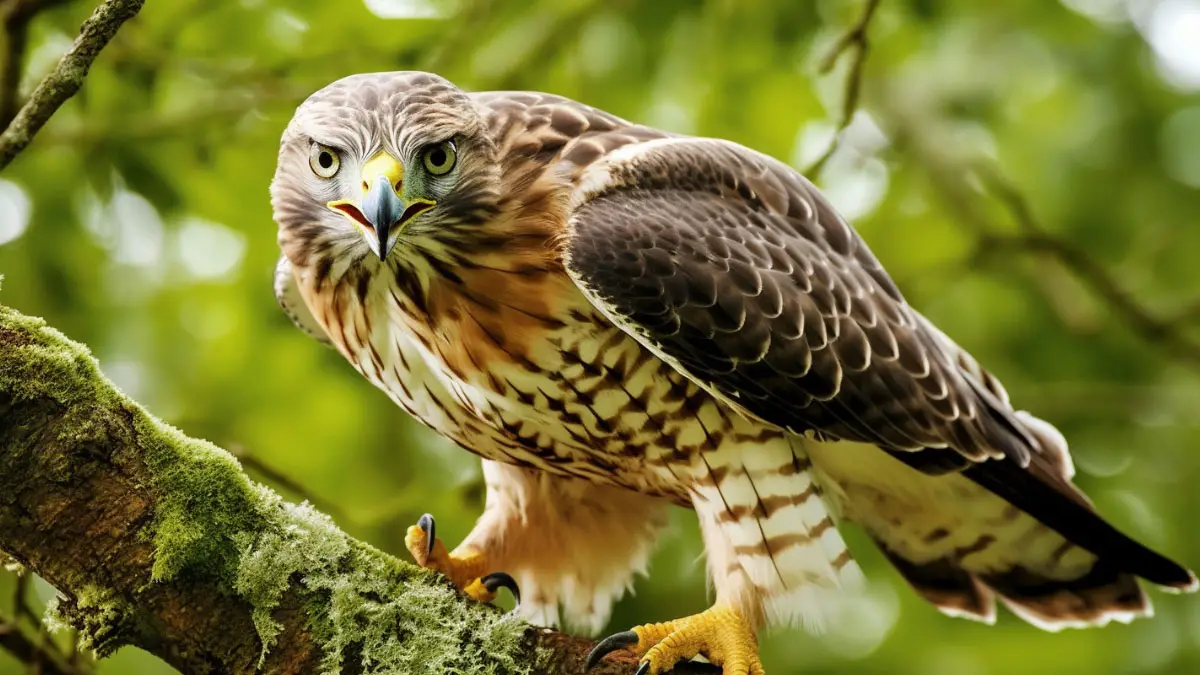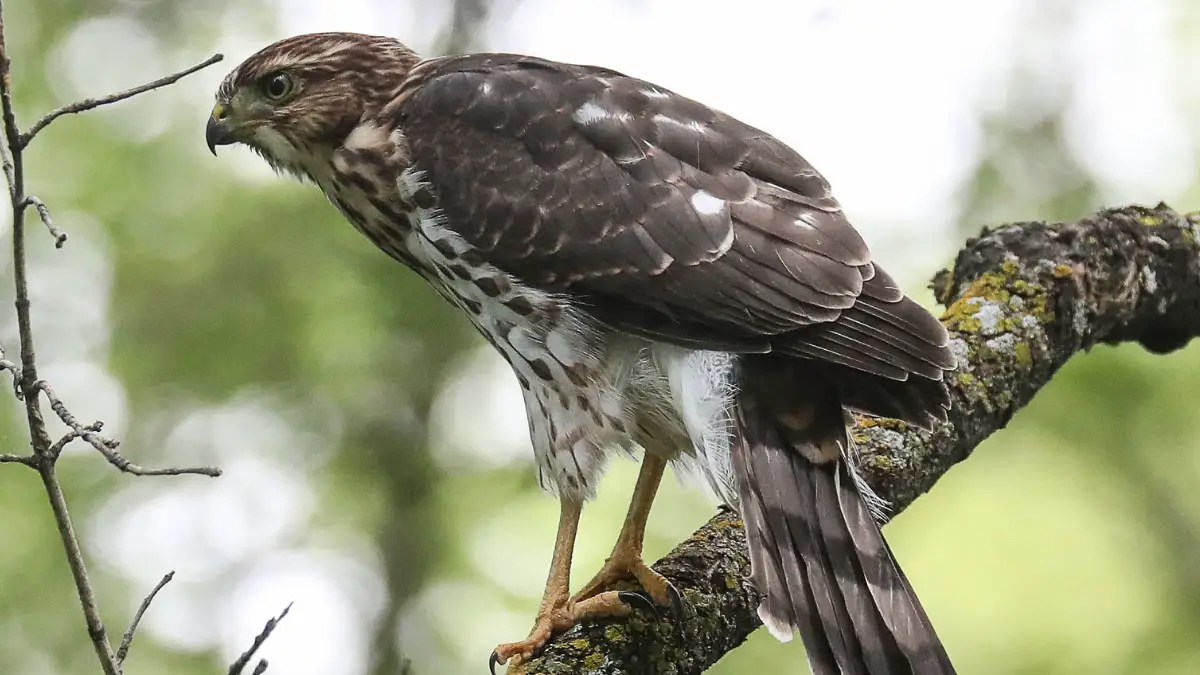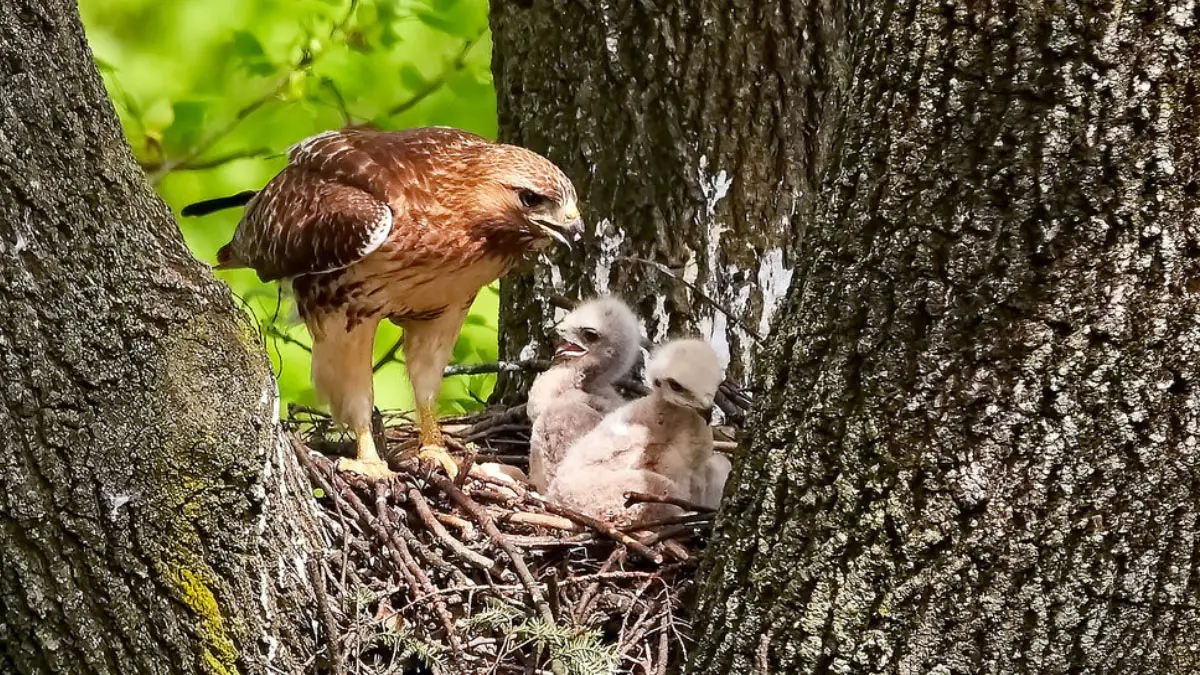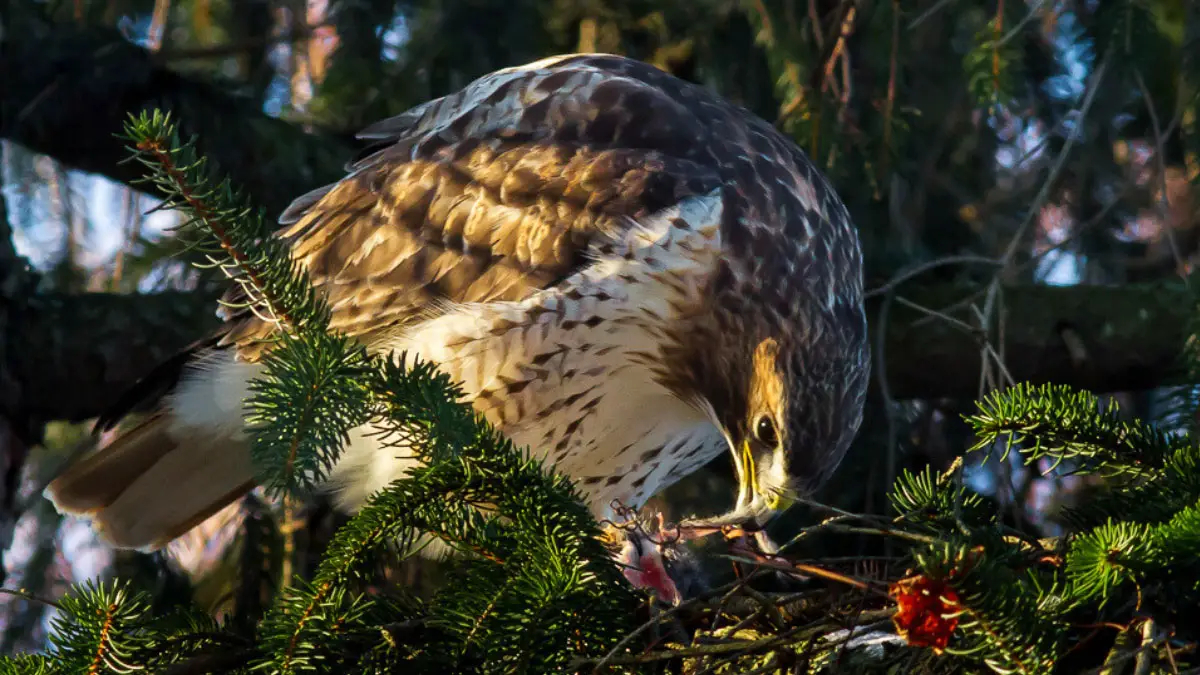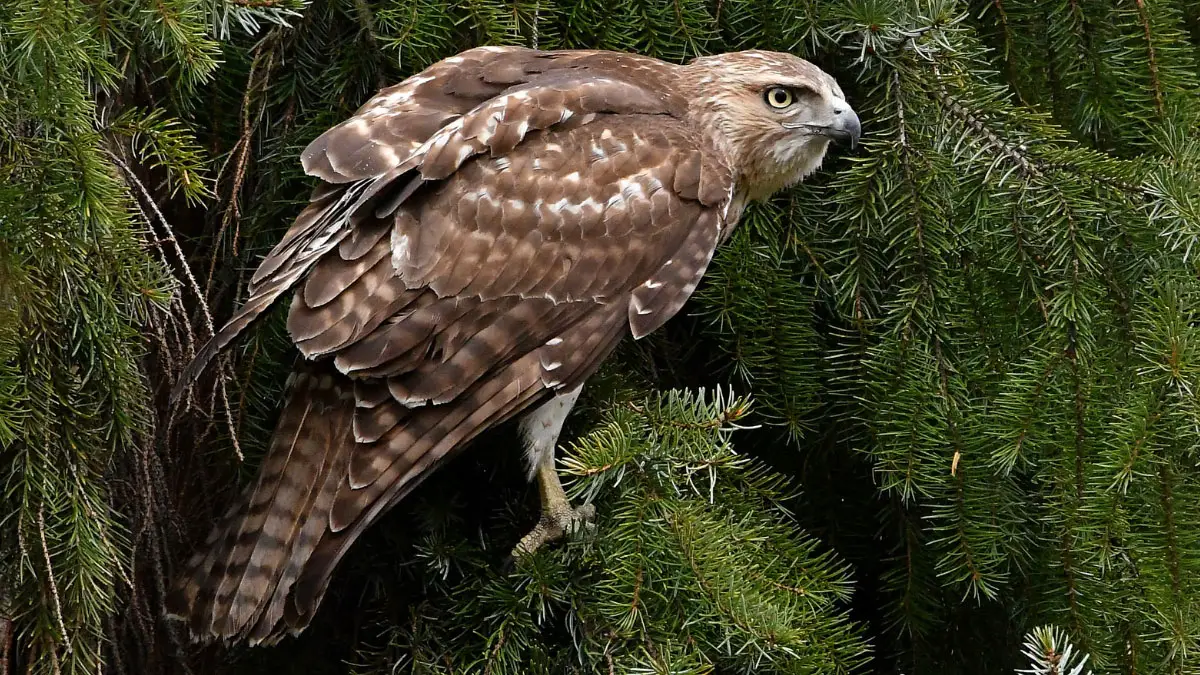Hawks are magnificent birds of prey and are known for their impressive aerial skills and sharp talons. They love to live in areas of deserts, fields, mountainous plains, and tropical, moist areas. They range from Central America to North America, Canada to Mexico, South America: Jamaica to West Indies, Europe, and Asia.
One question that often comes up among bird enthusiasts is, ‘Do hawks migrate?’ The answer is yes, hawks do migrate. In fact, hawk migration is one of the most impressive avian migrations in the world. Hawks are known to travel thousands of miles each year.
This ranges from their breeding grounds in the northern hemisphere to their wintering grounds in the south. This migration is important both for the birds themselves and for the ecosystems they inhabit.
In this article, we will explore the fascinating world of hawk migration. This will include the different species of hawks that undertake this journey. It will also cover the routes they take and the challenges they face along the way. By the end of this article, you will have a deeper appreciation for the incredible journey that these raptors undertake each year.
What Is Hawk Migration?
Hawk migration refers to the seasonal movement of hawks, which are birds of prey, from one geographic area to another. Hawks are known for their remarkable long-distance migrations. There they travel hundreds to thousands of miles to reach their breeding habitats or wintering grounds.
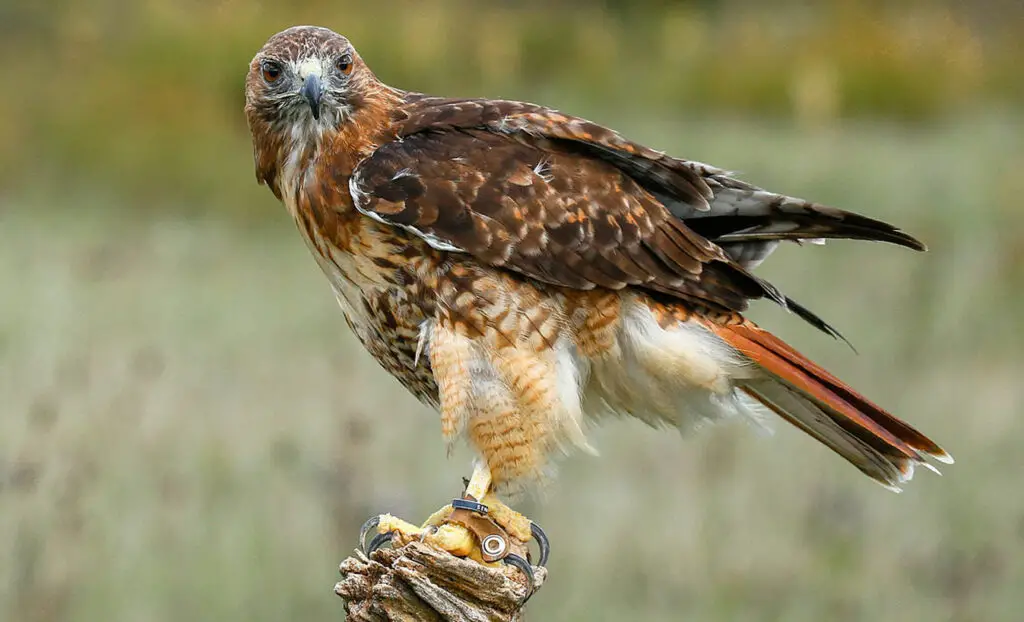
This phenomenon is observed in various parts of the world, including North America, Europe, Africa, and Asia.
Reasons Why Hawks Migrate
Hawks migrate for various reasons, such as
- Food availability: One of the primary reasons for hawk migration is food availability. As temperatures drop, prey becomes scarce, and hawks must move to warmer areas where they can find food.
- Breeding: Another reason for hawk migration is breeding. Hawks migrate to their breeding grounds to mate and nest. The migration to these breeding grounds is often triggered by environmental cues, such as changes in day length and temperature.
Hawks typically return to the same breeding grounds year after year, establishing a migratory pattern that can span multiple generations.
- Climate: Climate change also affects hawk migration patterns. As temperatures warm, some hawks change their migratory patterns or shorten the distance of their migration. In some cases, hawks are even choosing to overwinter in areas where they previously only migrated through.
How Do Hawks Migrate?
Hawk migration behavior is typically observed in the fall and spring as these birds move between their breeding and wintering grounds.
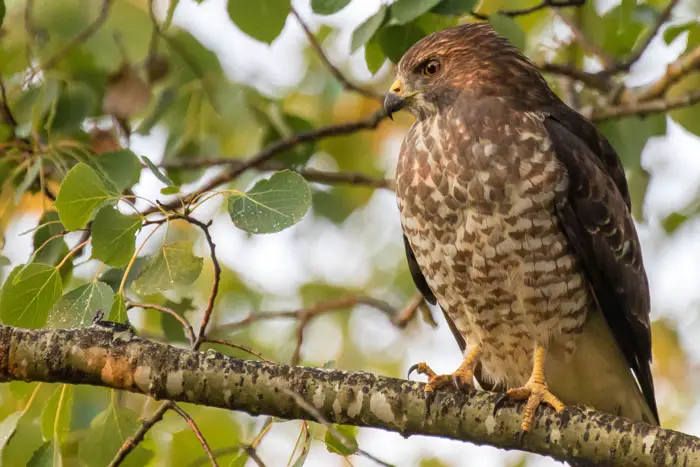
In North America, the migration season usually starts in September and lasts until November, and then resumes in March and April. During these periods, hawks can be seen flying in large numbers, often in groups called “kettles.” They fly at high altitudes, sometimes more than 13,000 feet, and can travel around 500 miles per day.
Navigation Methods Used By Hawks
Hawks use a combination of visual and navigational cues to guide their migration. They rely on landmarks, such as mountain ranges and coastlines, to help them navigate. Moreover, they also use the position of the sun and the Earth’s magnetic field to determine their direction.
Factors That Influence Hawk Migration
The timing and route of hawk migration are influenced by several factors, including
- Weather conditions
- Food availability
- Breeding conditions
Hawks prefer to migrate during favorable weather conditions, such as clear skies and light winds, to reduce the energy required for flight. They also follow migratory pathways that provide abundant food sources. These can be open fields and coastlines where they can hunt for small mammals and birds.
Changes In Hawk Migration Patterns
Climate change has been shown to have a significant impact on the timing and patterns of hawk migration. Changes in temperature and weather patterns can affect the timing of migration.
This causes some species to arrive earlier or later than usual. Habitat loss and fragmentation can also impact the availability of food and nesting sites. This can affect the breeding success of hawk populations.
Types of Hawks that Migrate
Hawks are birds of prey that belong to the family Accipitridae. Some hawk species are known to migrate, while others don’t. Hawks are birds that hunt during the day and migrate during the daytime hours.
The types of migration of hawks can vary significantly among different species. While some hawks don’t prefer migration, others undertake long-distance ones.
Swainson’s hawks, for instance, primarily feed on insects after their breeding season. They travel extensively towards Argentina, starting from Alaska.
On the other hand, the rough-legged hawk spends its summers chasing voles and lemmings prior to relocating south. This species primarily breeds in the Arctic tundra of
- North America
- Asia
- Europe
This bird behavior is typical of many species that need to adapt to changes in their environment.
Common Hawk Species That Migrate
Aside from Swainson’s and rough-legged hawks, there are several hawk species that migrate, and some of the most common ones include the following:
- Broad-winged hawk (Buteo platypterus): This species is known for its spectacular migration. This involves hundreds of thousands of birds traveling from North America to Central and South America in large flocks, known as “kettles.”
This is to take advantage of the thermals that lift them into the air. By soaring in these thermals, the hawks can conserve energy while traveling long distances. Broad-winged hawks prefer to migrate during the day and can cover distances of up to 64 km per hour.
- Red-tailed hawk (Buteo jamaicensis): This species is one of the most widespread and well-known hawks in North America. Red-tailed hawks typically migrate during the fall and winter and can travel around 1,500 km to find prey.
- Sharp-shinned hawk (Accipiter striatus): This small hawk species is known for its agility and speed. During the breeding season, this bird can be found in northern regions up to the treeline in Alaska and Canada. In the winter, it migrates to the southern United States, Mexico, Central America, and the Caribbean.
- Swainson’s hawk (Buteo swainsoni): This species is known for its long migration from North America to South America. Swainson’s hawks can travel more than 12,000 miles in a round-trip migration. The migration speed can get 25% slower during migration towards the south than the north.
Comparison of Migratory And Non-Migratory Hawk Species
Here’s a comparison table between migratory and non-migratory hawk species:
| Criteria | Migratory Hawks | Migratory Hawks |
|---|---|---|
| Non-migratory Hawks | ||
| Movement | Migrate from one region to another in search of food, breeding grounds, or better climate conditions | Stay in the same region throughout the year |
| Adaptability | Need to adapt to changes in their environment | Adapt to their environment and survive on a steady supply of prey |
| Characteristics | Strong wings and sharp talons | Strong wings and sharp talons |
| Keen sense of vision | Keen sense of vision | |
| Ability to fly for long hours without stopping | Ability to hunt and defend themselves | |
| Longer wingspan and lighter body to fly long distances unwavering | Shorter wingspan and heavier body compared to migratory ones | |
| Larger hearts and lungs to breathe efficiently at high altitude | Smaller hearts and lungs compared to migratory species | |
| Examples of Species | Broad-winged Hawk, Red-tailed Hawk, Sharp-shinned Hawk, Swainson’s Hawk | Cooper’s Hawk, Harris’s Hawk |
Hawk Migration Routes
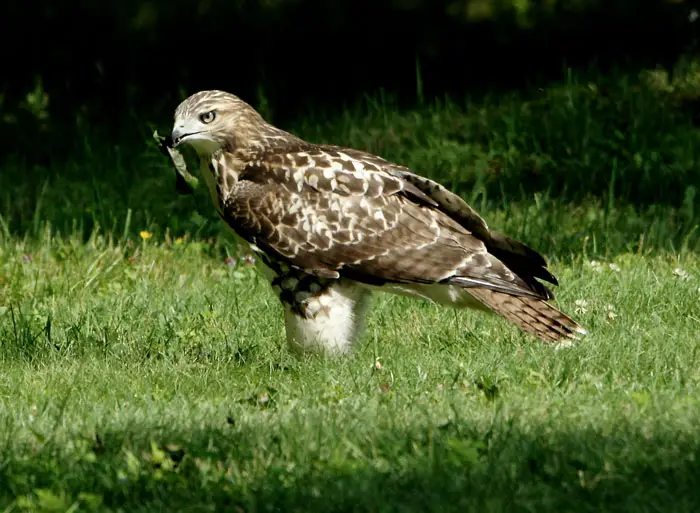
Bird migration tracking is a complex task that requires a combination of scientific methods, including-
- Satellite tracking
- Radar
- Visual observations
Scientists have developed a sophisticated understanding of these routes, which vary according to species, geography, and other factors.
The major routes include-
- The Atlantic Flyway, which spans from eastern Canada to South America
- The Pacific Flyway, which runs from Alaska to South America
- The Central Flyway, which covers the Great Plains of North America
Other important migration routes include
- The Mississippi Flyway
- The Caribbean Flyway
- The East Asian Flyway
Reasons For Specific Migration Routes
There are several reasons why Hawks follow specific routes.
- One key factor is geography, as hawks follow the contours of the land and fly along natural barriers such as coastlines, mountain ranges, and rivers.
- Weather patterns also play a role, as hawks tend to follow prevailing winds and avoid areas of heavy precipitation.
- Another important factor is food availability. Hawks are carnivores, and they continue foraging for food along their routes to sustain them during their journey.
For example, many hawks follow the insect hatch along the Gulf Coast, while others follow the salmon runs in the Pacific Northwest.
Challenges Faced by Migrating Hawks
Migrating hawks face numerous challenges throughout their long journeys across vast distances. These challenges include threats to their migration routes and various environmental factors. These can impact their ability to complete their journeys successfully.
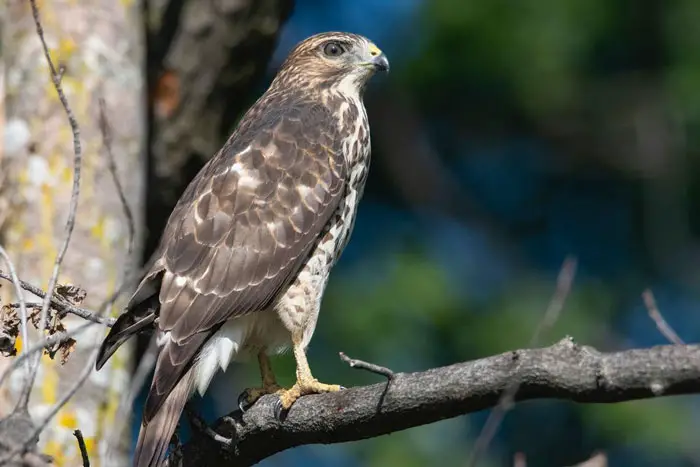
Threats to Hawk Migration Routes
One of the most significant challenges faced by migrating hawks is the loss of habitat and nesting areas along their routes. Human development is continuing to encroach upon natural bird habitats.
Hence, the hawks‘ ability to find suitable places to rest and feed during their migration becomes more challenging.
Additionally, hawks face numerous threats from human activity, such as
- Collisions with power lines and wind turbines
- Illegal hunting
- Pesticide use
These factors can significantly impact the number of hawks that complete their migration. Consequently, they lead to hawk population changes and long-term consequences for ecosystems.
Environmental Factors Affecting Hawk Migration
Environmental factors such as weather patterns, food availability, and changes in wind currents also affect migrating hawks. Droughts or heavy rainfall in certain areas can impact food availability for the birds. These lead to starvation or weakened birds that cannot complete their migration.
Furthermore, hawks rely on wind currents to help them travel long distances with minimal energy expenditure. However, changes in wind patterns due to climate change and other factors can disrupt their migratory patterns. These lead to disorientation and confusion for the birds.
Conservation Efforts for Migrating Hawks
Migrating hawks face numerous challenges during their annual journey. However, there are several bird conservation efforts in place to help protect and conserve these incredible birds of prey.
One such effort is the Hawk Migration Association of North America (HMANA). It works to advance scientific knowledge of hawk migration and promote the conservation of raptor populations.
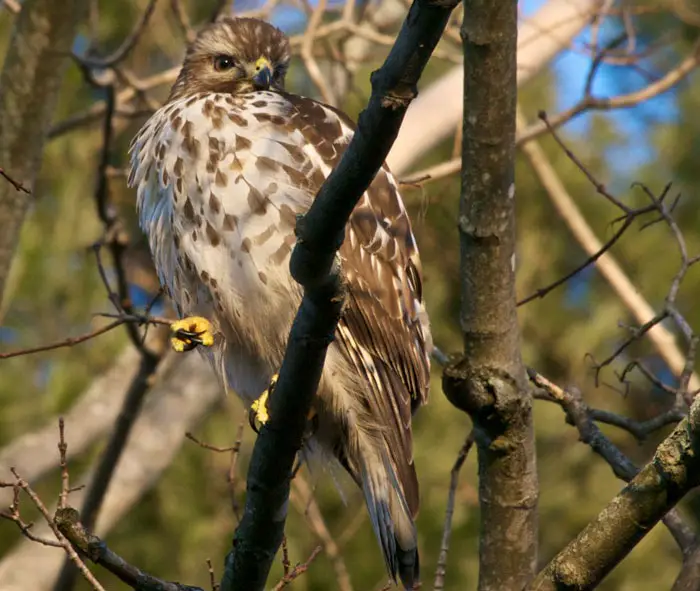
HMANA has established a network of volunteer observers for bird monitoring who monitor hawk migration each year. Moreover, they collect valuable data on bird population trends and migration patterns. This data is used to inform conservation strategies and protect hawks‘ habitats.
Another conservation effort is the establishment of hawk-watching sites. These are locations where people can gather to observe and count migrating hawks.
These sites provide important data on population trends. Besides, they raise public awareness of the importance of conserving these magnificent birds.
Success Stories in Hawk Conservation
One of the most notable success stories in hawk conservation is the recovery of the Peregrine Falcon. This bird of prey was nearly extinct in the 1970s due to the widespread use of the pesticide DDT. This caused thinning of their eggshells and reproductive failure.
However, through concerted conservation efforts, the Peregrine Falcon population has rebounded. It is now a common sight in many cities across North America. The efforts included-
- The banning of DDT
- Captive breeding programs
- Habitat restoration
Another success story is the conservation of the Bald Eagle, which was once on the brink of extinction due to DDT, hunting, and habitat destruction.
However, through similar conservation efforts as the Peregrine Falcon, the Bald Eagle population has recovered. It was removed from the endangered species list in 2007.
How Individuals Can Help Conserve Migrating Hawks?
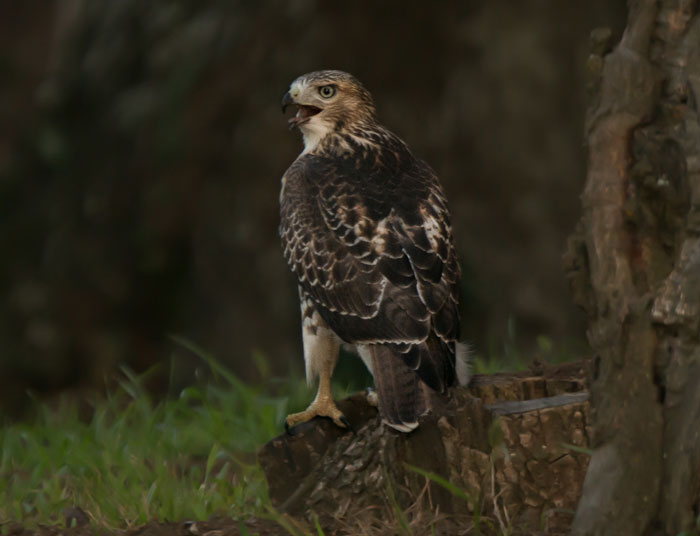
There are several ways that individuals can help conserve migrating hawks, including:
- Supporting bird conservation organizations such as HMANA and the Audubon Society, which work to protect raptor populations.
- Reducing the use of pesticides and supporting organic farming practices, which help to protect hawks‘ habitats and prey.
- Reporting incidents of illegal hunting or poaching of hawks to local law enforcement.
- Reducing bird collisions with human-made structures by
- Turning off unnecessary lights during migration season
- Supporting efforts to make buildings and wind turbines more bird-friendly
- Learning more about hawks and their migration patterns, and sharing this knowledge with others. This will raise awareness of the importance of conserving these incredible birds.
FAQs
Let’s look at some additional questions and their answers related to the Hawks’ migration.
Q. How long does hawk migration take?
Ans. The duration of hawk migration varies depending on the species and the distance traveled. Some hawks, like Red-tailed ones, may complete their migration in a matter of weeks. Conversely, others may take months to reach their destination, like Swainson’s Hawk.
Q. Do male and female hawks migrate together?
Ans. Male and female hawks may migrate together, but it depends on the species. In some cases, males and females may migrate separately or at different times. Cooper’s hawk is an example of such migration.
Q. Can hawks migrate over water?
Ans. Yes, many hawks are able to migrate over bodies of water. However, they try to minimize flying over them. That’s because they tend to lose altitude while crossing a river or lake.
Conclusion
Hawk migration plays a crucial role in bird ecology research by contributing to several things. They include population dynamics, genetic diversity, and ecosystem functioning.
The patterns and drivers of hawk migration include environmental factors, predator-prey interactions, and navigation mechanisms.
Furthermore, it’s important to monitor and conserve hawk populations to maintain healthy ecosystems and preserve cultural and scientific values. However, the future outlook for hawk migration and conservation is uncertain. That’s because habitat loss, climate change, and human activities continue to pose significant threats to migratory birds.
Therefore, it is essential to promote public awareness, scientific research, and policy actions. It will help to ensure the sustainability of bird migration and its benefits for wildlife and society.
